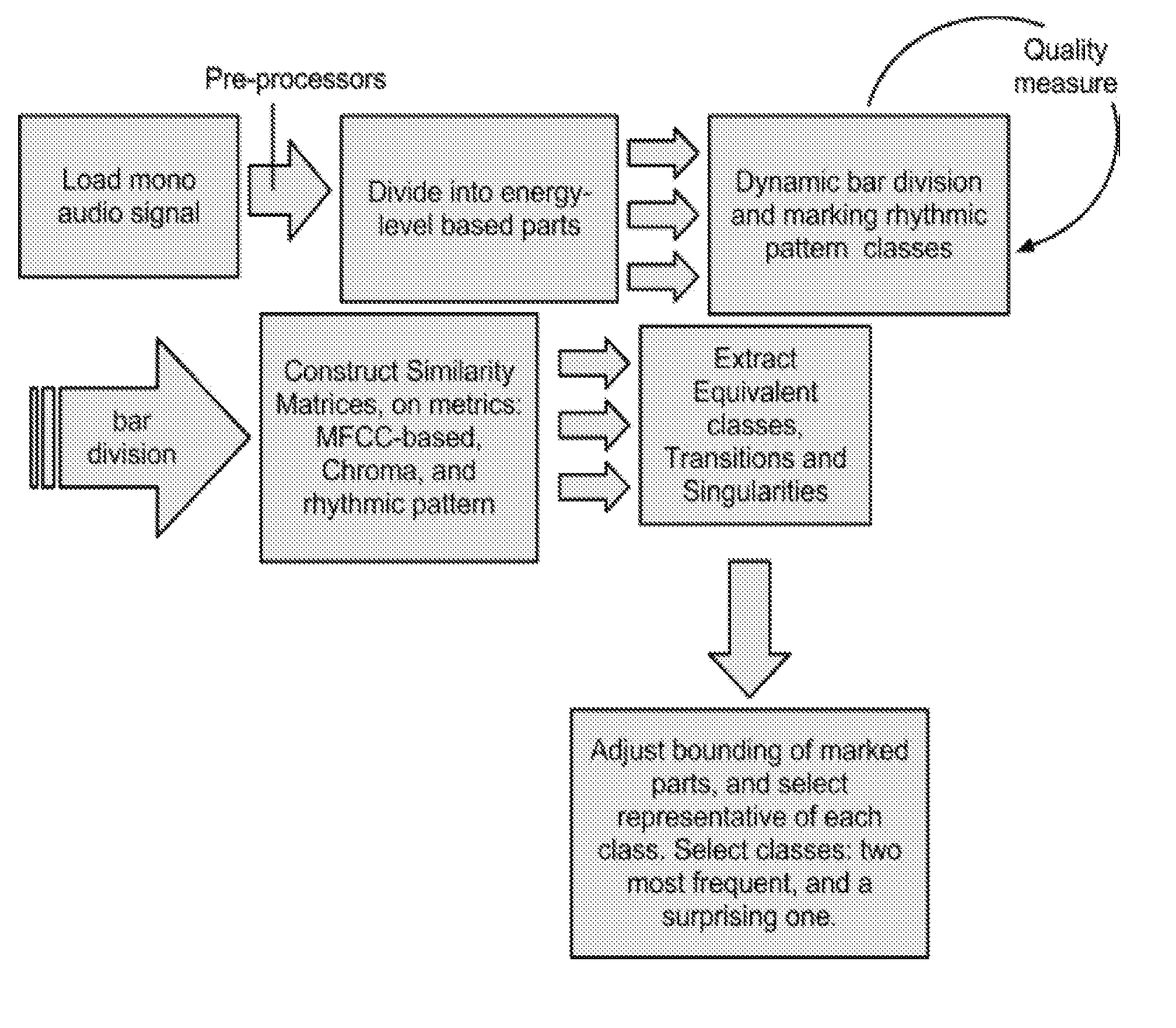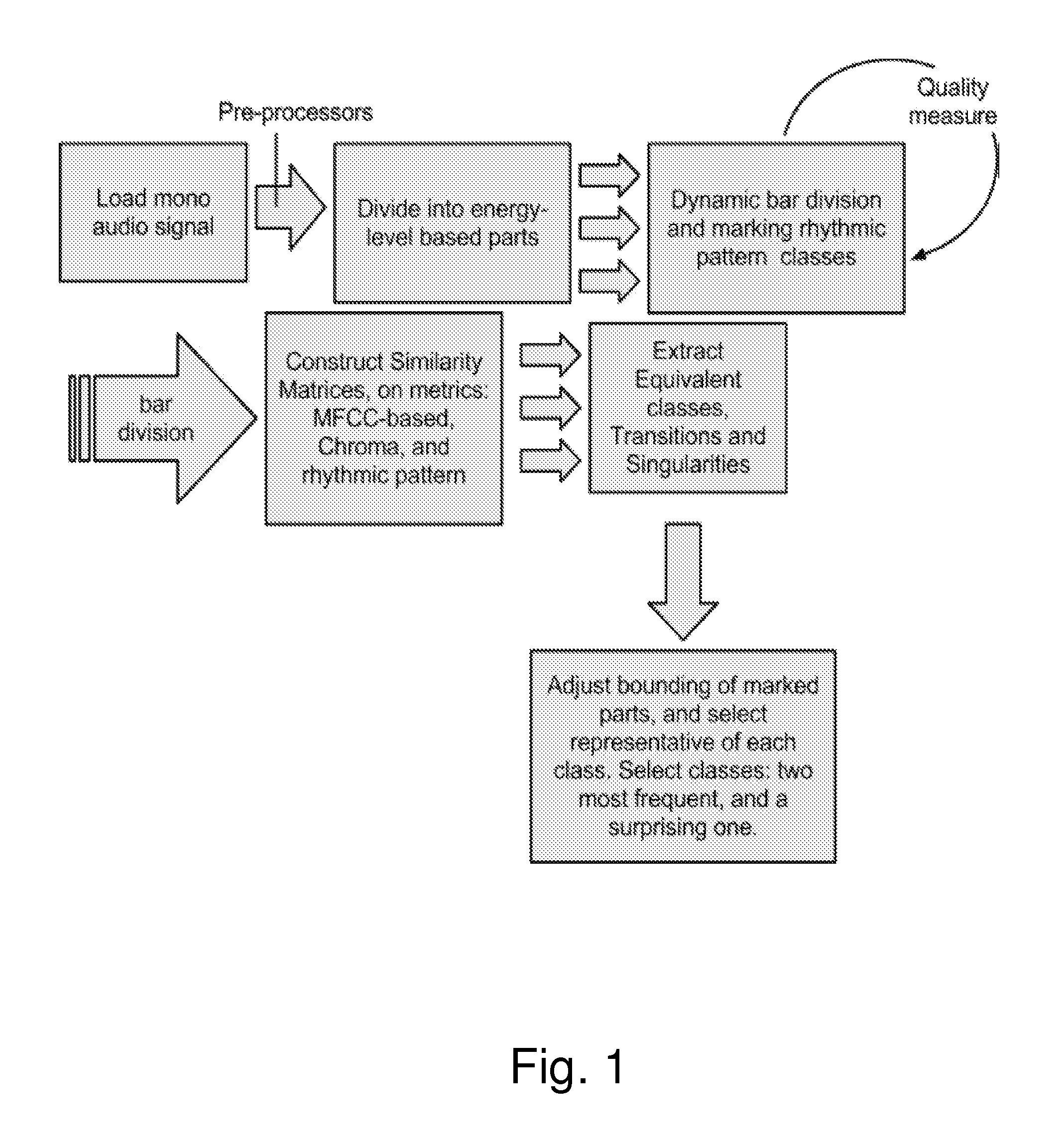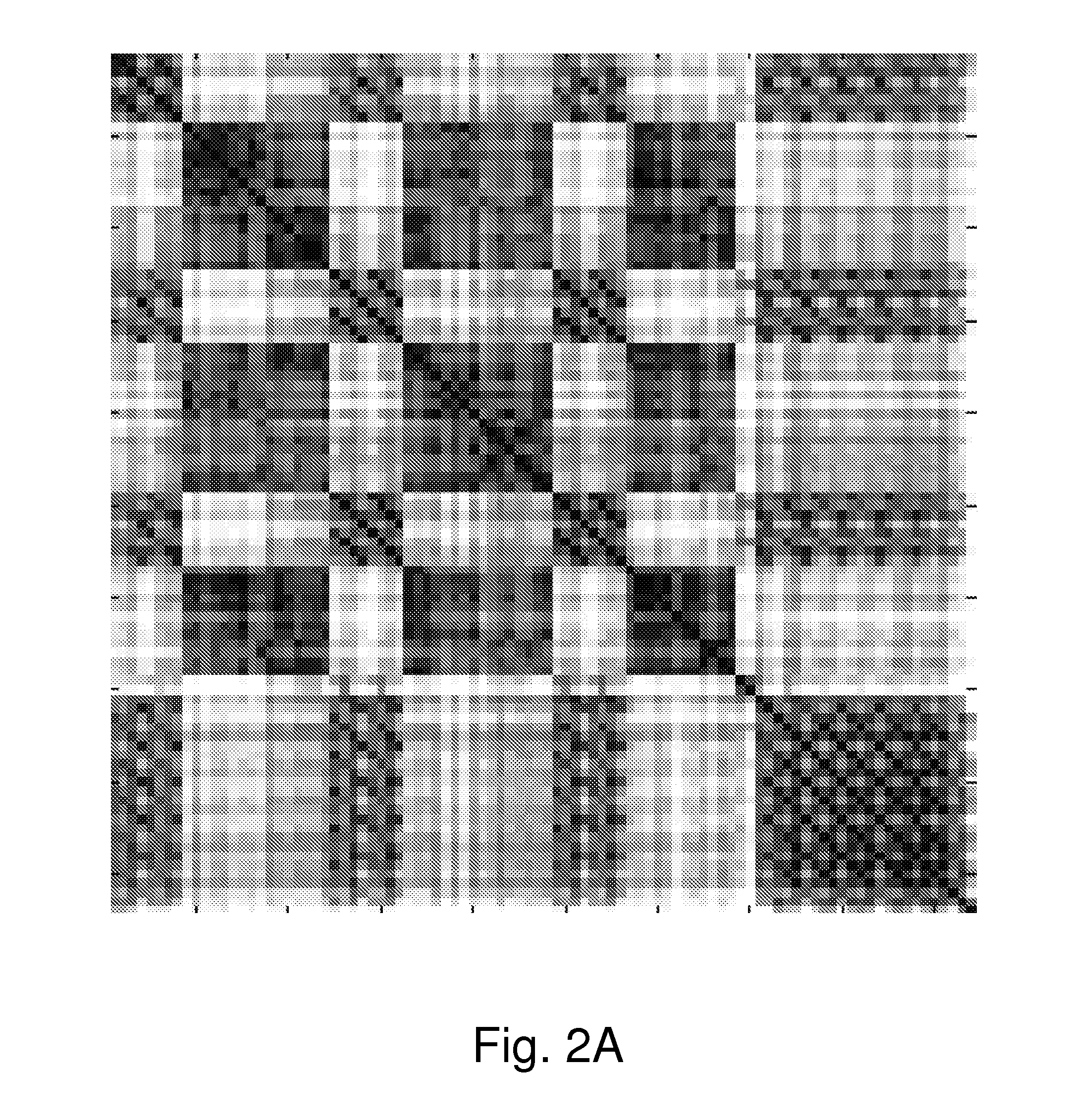Method for extracting representative segments from music
a music and representative technology, applied in the field of digital sound processing, can solve the problem that we hardly have the time or patience to listen to a whole composition
- Summary
- Abstract
- Description
- Claims
- Application Information
AI Technical Summary
Benefits of technology
Problems solved by technology
Method used
Image
Examples
example 1
The Song “You Got Me” Performed by “the Roots—Featuring Erykah Badu (Vocals)”
[0115]FIG. 2A illustrates the MFCCs matrix of this song. The dark diagonals represent repetitions of the chorus. In this matrix comprises pixels in a grayscale, where darker pixels indicate a higher similarity level (it can be seen that the main diagonal is black). The grayscale levels pass a histogram, which converts the pixel values to a binary black and white scale, in which white diagonals can be identified. Only diagonals that are displaced from the main diagonal are considered—the minimal distance should be at least the diagonal length.
[0116]The extracted diagonals are illustrated in FIG. 2B. In this case, it can be seen that is possible to associate between diagonals that belong to a mutual equivalent class (a cluster). For example, diagonals 22, 23 and 24 define an equivalent class, since they contain pixels that overlap in x dimension. Similarly, diagonals 23, 25 and 26 define another equivalent cl...
example 2
The “C-Part” from the Album Rio by Duran-Duran
[0117]FIG. 3A illustrates the MFCCs matrix of this song. The composition starts on the white cross 31, continues through the two dark diagonal blocks 32 and 33 surrounded with brighter lines. The diagonals that were found represent the chorus. The extracted diagonals are illustrated in FIG. 3B.
[0118]In this example, the timbre information shows high correlation to the C-Part, since the C-part has a saxophone entering, the last chorus has the same saxophone. The intro (represented by the white block) is a stretched chord cluster unrelated to the song and even not so self similar.
example 3
Summertime by John Coltrain
[0119]FIG. 4 illustrates the MFCCs matrix of this composition. The different dark blocks along the main diagonal correspond to the different solo segments (Saxophone, Piano, Double-Bass, Drum, and Saxophone). The Double-Bass solo (represented by the bright margins) is different, since the instruments balance changes in this part.
[0120]The processing results obtained by the method proposed by the present invention can be also used to for mapping an entire song and providing a graphical interface that allows a DJ (Disc Jockey—a person who plays recorded music for an audience) to view the patterns of different segments the song, as well as the time points of transitions between them. The DJ can see the map and identify the different segments of the song. The DJ can then rapidly browse between them and play the part relevant to the mix.
[0121]The method described above allows finding a segment with clear start and end point music-wise, so that the chosen segmen...
PUM
 Login to View More
Login to View More Abstract
Description
Claims
Application Information
 Login to View More
Login to View More - R&D
- Intellectual Property
- Life Sciences
- Materials
- Tech Scout
- Unparalleled Data Quality
- Higher Quality Content
- 60% Fewer Hallucinations
Browse by: Latest US Patents, China's latest patents, Technical Efficacy Thesaurus, Application Domain, Technology Topic, Popular Technical Reports.
© 2025 PatSnap. All rights reserved.Legal|Privacy policy|Modern Slavery Act Transparency Statement|Sitemap|About US| Contact US: help@patsnap.com



